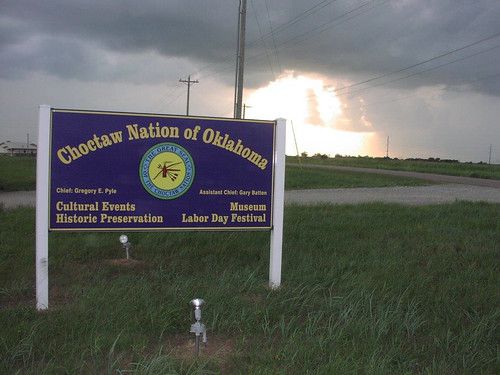
Rural Oklahoma is home to many important tribal communities. Among these, the Choctaw Nation spans over ten counties in southeastern Oklahoma, while the Cherokee Nation runs along the state’s northeast border, and Muscogee (Creek) Nation lies farther west.
These communities play a critical role in developing businesses, affordable housing, and infrastructure like water, roads, and telecommunications. However, these areas endure chronic poverty, limited opportunities and countless other economic challenges. For instance, most of the 1,100 residents of Boley, Oklahoma – located in the heart of Creek nation – live on less than 25 dollars per day.
Earlier this year, I joined Leslie Wheelock, Director of USDA’s Office of Tribal Relations, on a visit to the area.
We started in Durant, Oklahoma, where we met Dr. Kenneth English, Director of Choctaw Nation’s Career Development Program, to discuss the Choctaw Nation’s efforts to link career counseling with training and job placement. These efforts place nearly 2000 students with 300 employers every year. In addition to helping young members of the Choctaw Nation move successfully into post-secondary education and into the workforce, Dr. English’s program recently launched the Native American Business Resource Center. The Center offers training and individualized counseling to Choctaw members who are looking to start their own businesses. Cultivating economic diversification, the Center utilizes natural, historic, and cultural resources to support growth, with a preliminary focus on increasing tourism as well as local and regional food production and distribution.
In January, President Obama designated the Choctaw Nation the first Tribal Promise Zone. The White House Promise Zones Initiative is part of the President’s plan to create a better bargain for the middle class by partnering with local communities and businesses to create jobs, increase economic security, expand educational opportunities, increase private investment, and improve public safety. As part of a comprehensive plan to build additional economic opportunities in rural Oklahoma, the Choctaw Nation intends to leverage its role as the largest employer in the southeastern part of state, and work with partners like Oklahoma State University, Eastern Oklahoma State College, and the Kiamichi Technology Center to create a strong base for economic revitalization.
USDA is also investing in the future of the Cherokee and the Muscogee (Creek) Nations. In 2000, the Cherokee Nation used USDA’s Intermediary Relending Program (IRP) to alleviate poverty and increase both economic activity and employment in rural Oklahoma. This loan assisted many small businesses in the Cherokee Nation’s service area, in addition to creating or saving 122 local jobs.
In 2013, the College of Muscogee Nation (CMN) was the first Tribal College in Oklahoma to receive USDA's Community Facility Tribal College Grant Initiative. This support funded essential equipment needs for a new facility that includes a library, cafeteria, and fitness center, supporting education and health opportunities for Native American students.
Through efforts like Promise Zones and the dedicated work of our own Office of Tribal Relations, USDA remains committed to bringing meaningful resources and assistance to support the economic growth in Indian Country.

